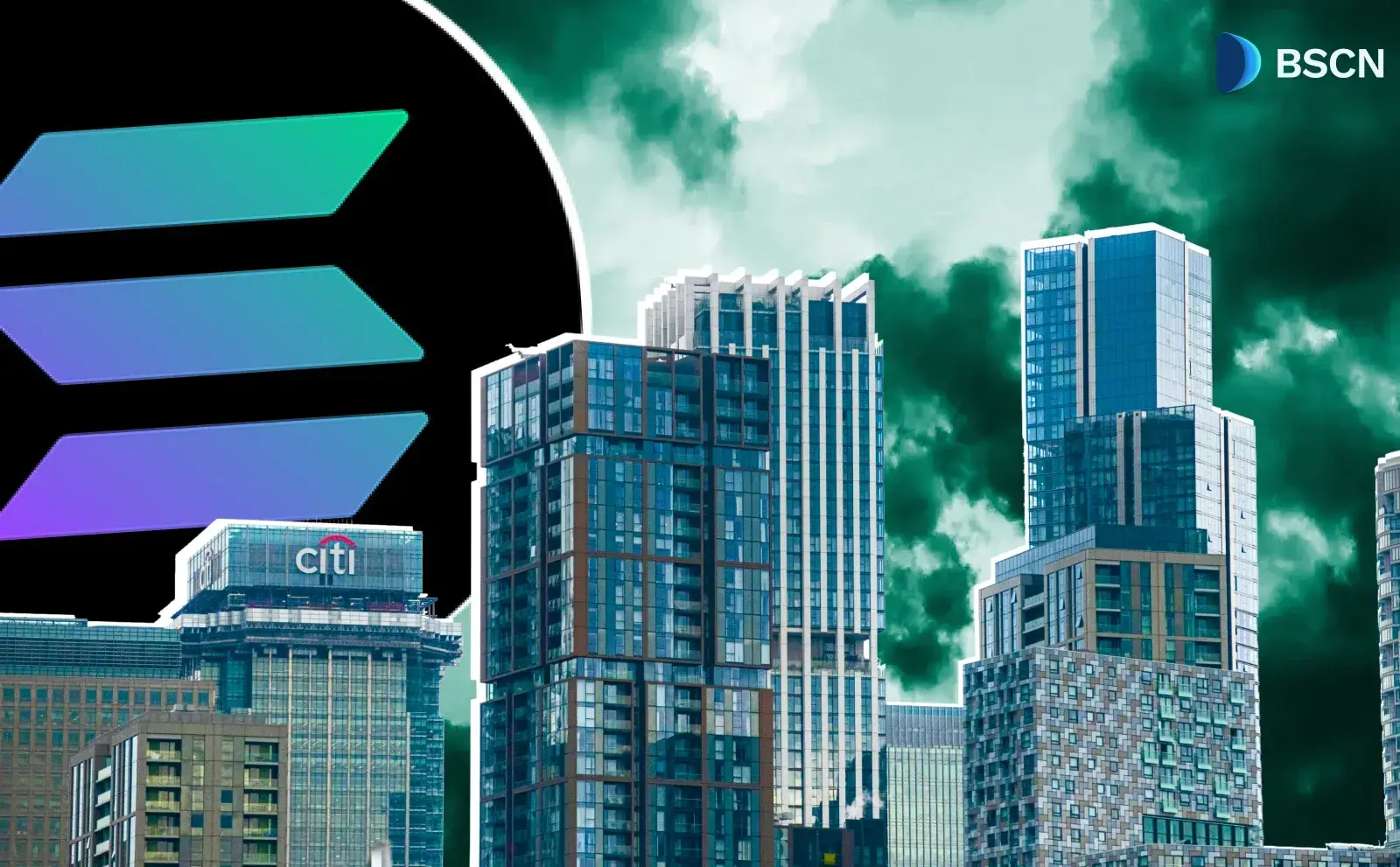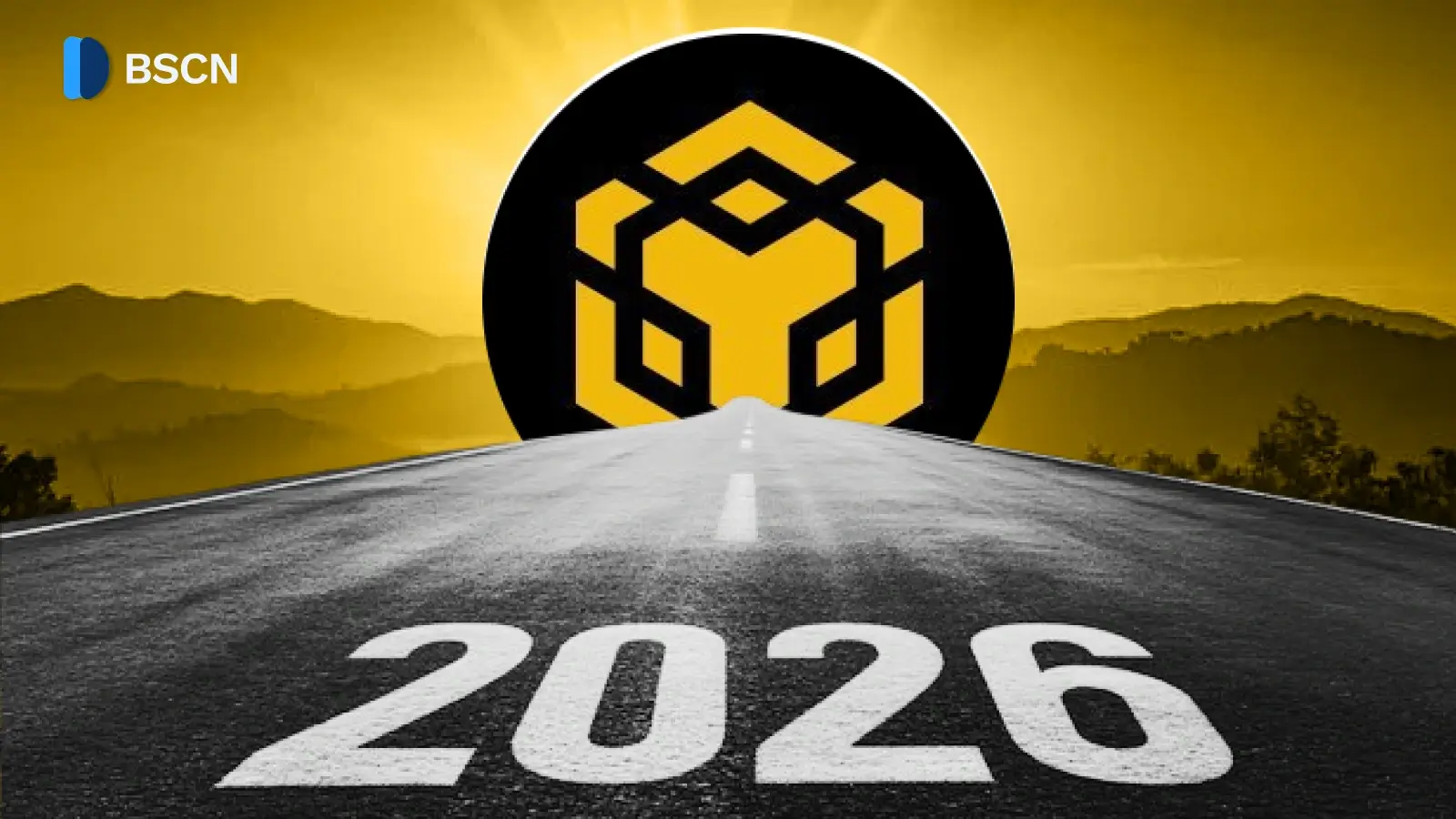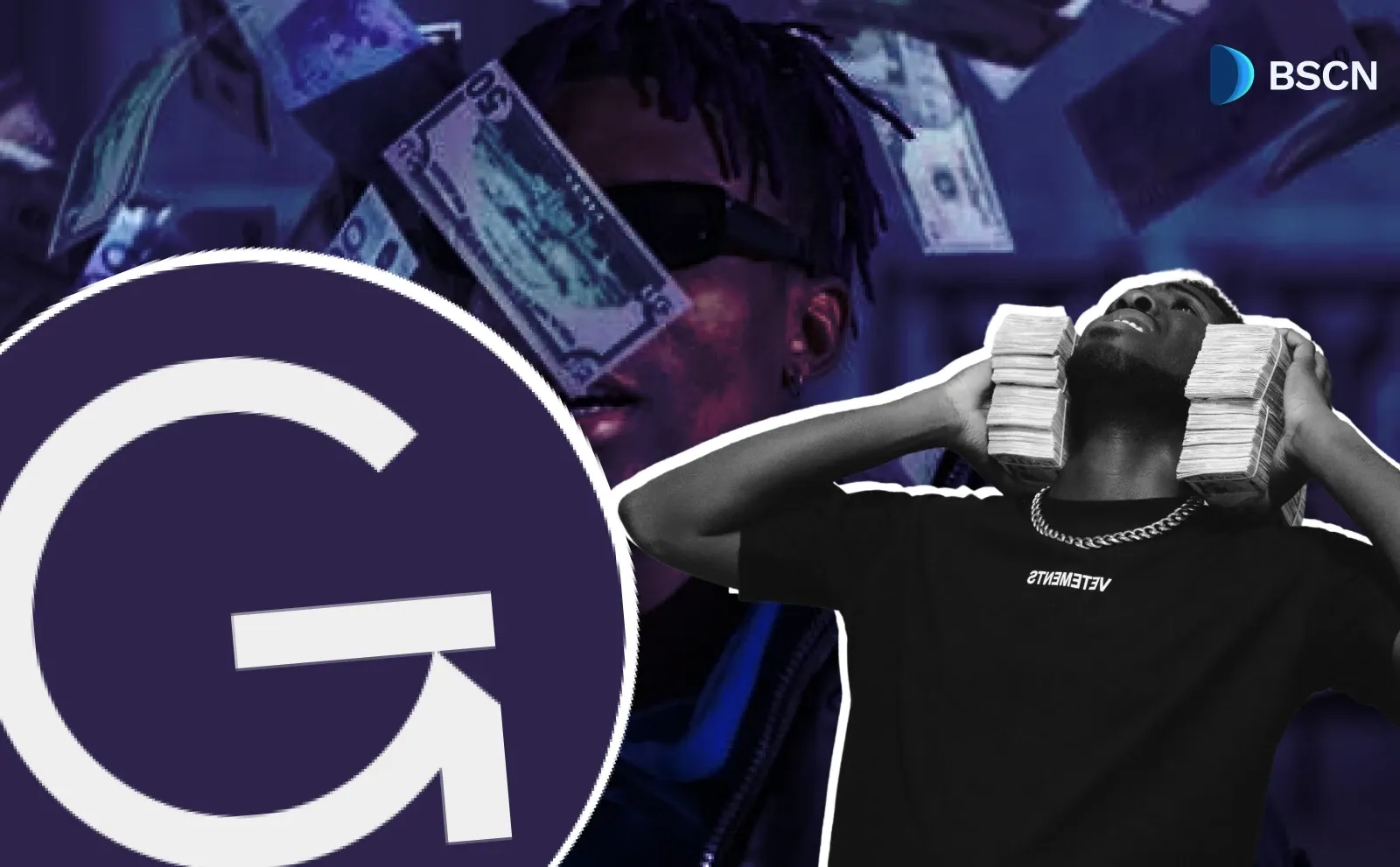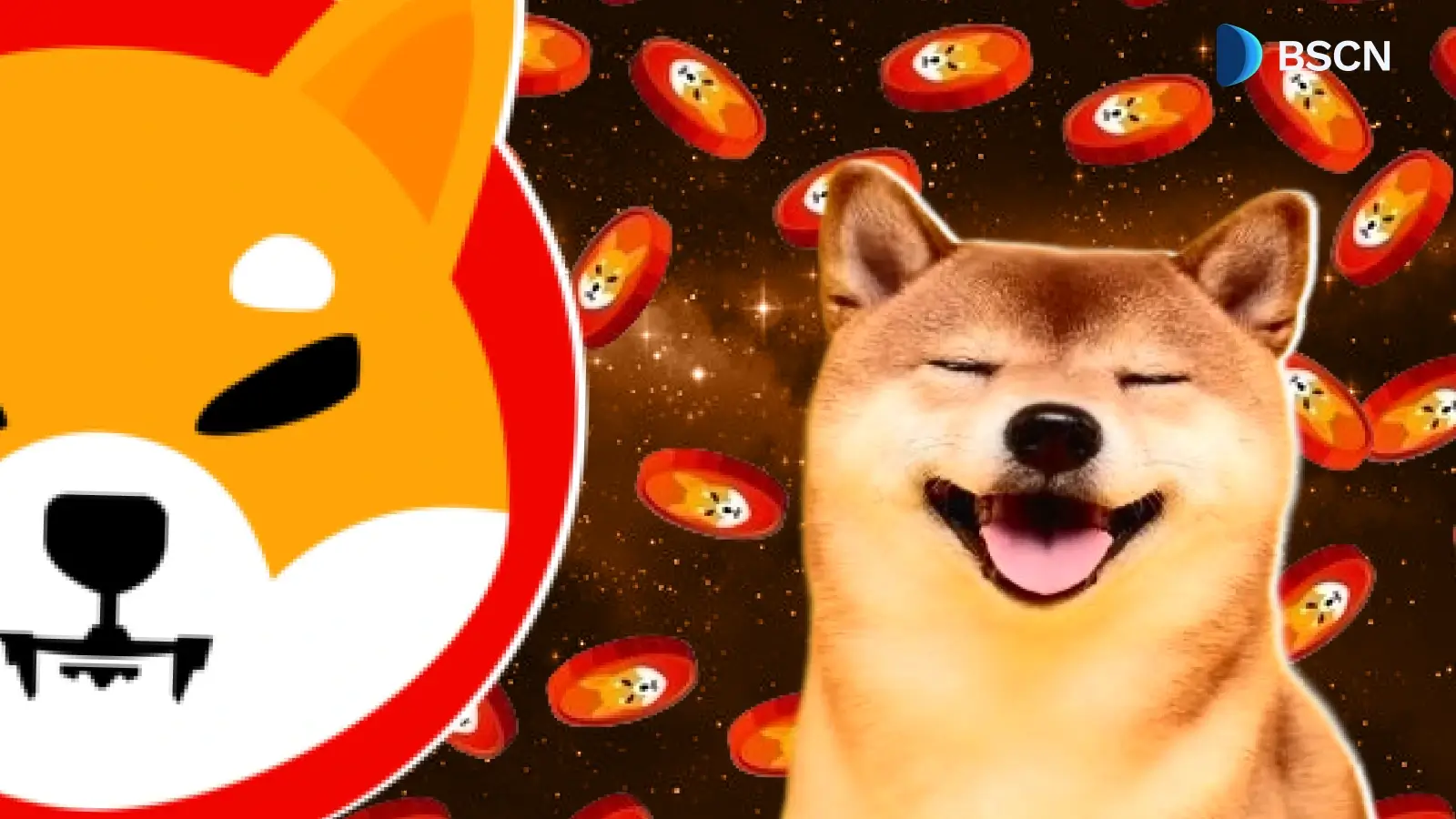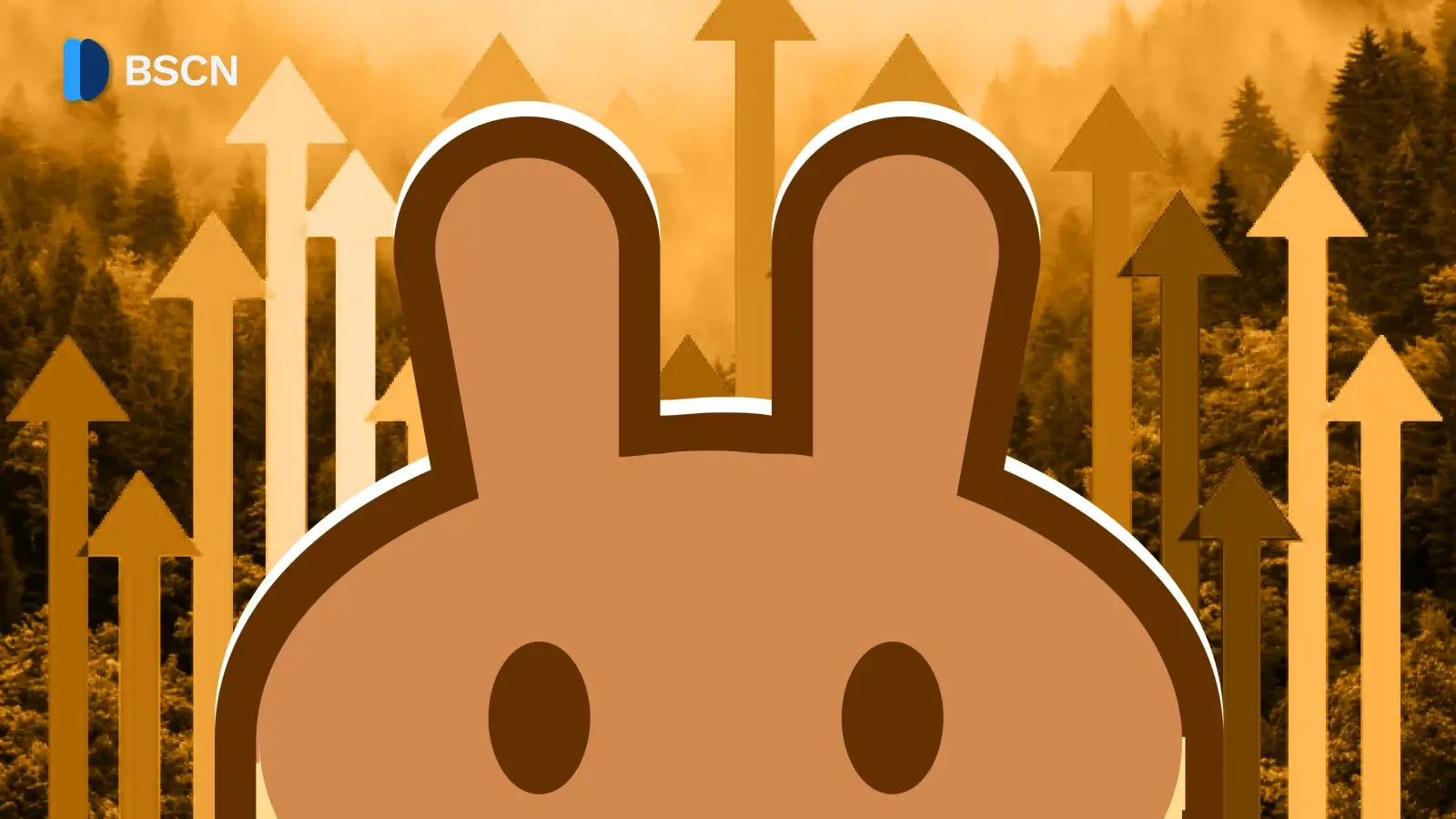Deepdive
(Advertisement)
$GRASS Analysis: Make Money with Your Unused Internet?
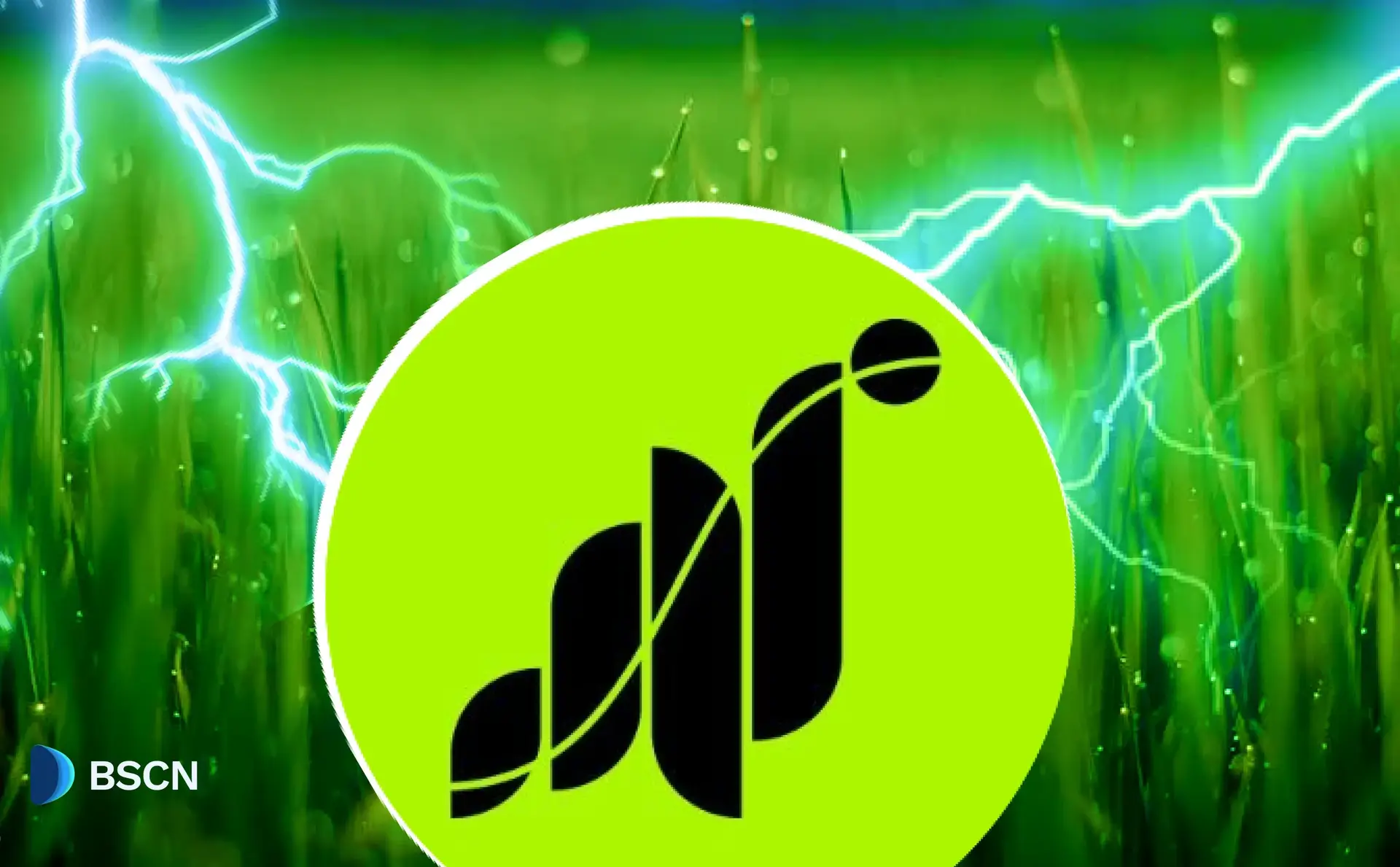
Monetize your unused internet with GRASS. Discover its tokenomics, earning potential, and role in AI data collection via decentralized infrastructure.
Crypto Rich
July 10, 2025
(Advertisement)
Yes, you can make money with your unused internet bandwidth through GRASS—and it's simpler than you might think. The GRASS Network pays users cryptocurrency for sharing spare bandwidth with companies training AI models, creating income streams from internet connections that typically sit idle for hours each day. Since launching on October 28, 2024, founder Andrej Radonjic and his team at Wynd Labs have built something unprecedented. Their Layer 2 solution on Solana already connects over 3 million users worldwide. These users aren't tech experts or crypto whales—they're everyday internet users contributing to what GRASS calls one of the first attempts at building a "user-owned knowledge graph of the internet."
Here's what makes this different: while Big Tech has quietly harvested user data for decades without compensation, GRASS flips that model entirely. Users receive rewards in the form of tokens for contributions they were already making, often unknowingly. It's a fundamental shift in who benefits from the internet economy.
The timing couldn't be better. AI companies desperately need training data, and current methods often involve questionable data practices. GRASS provides a transparent, user-controlled alternative that serves both sides of this equation—positioning itself squarely between two of tech's fastest-growing sectors: decentralized infrastructure and artificial intelligence.
How Does GRASS Work?
Think of your home internet like a multi-lane highway. Most of the time, several lanes sit completely empty while you browse, stream, or work. GRASS essentially lets you rent out those unused lanes to companies that need them—and pays you for the privilege.
How to Get Started
The process couldn't be simpler for users:
- Download the GRASS browser extension, mobile app, or desktop application
- Your device becomes a node that routes encrypted web requests to public servers
- Only unused bandwidth gets utilized, so Netflix won't buffer, and Zoom calls won't freeze
- Earn Grass Points based on how much you contribute, plus bonuses for referring friends
Technical Architecture
Behind the scenes, however, sophisticated technology powers this simplicity. GRASS operates what's called a Sovereign Data Rollup—think of it as a specialized assembly line with different stations. Nodes collect raw web data, routers organize traffic flow, validators verify everything's legitimate, and a ZK processor ensures data authenticity using advanced cryptography.
What comes out the other end? Clean, structured datasets ready for AI training. Companies get the regional pricing data, localized content, and market research they need. Meanwhile, an AI tool called Socrates (developed by Wynd Labs) transforms all that messy web information into something actually useful for training machine learning models.
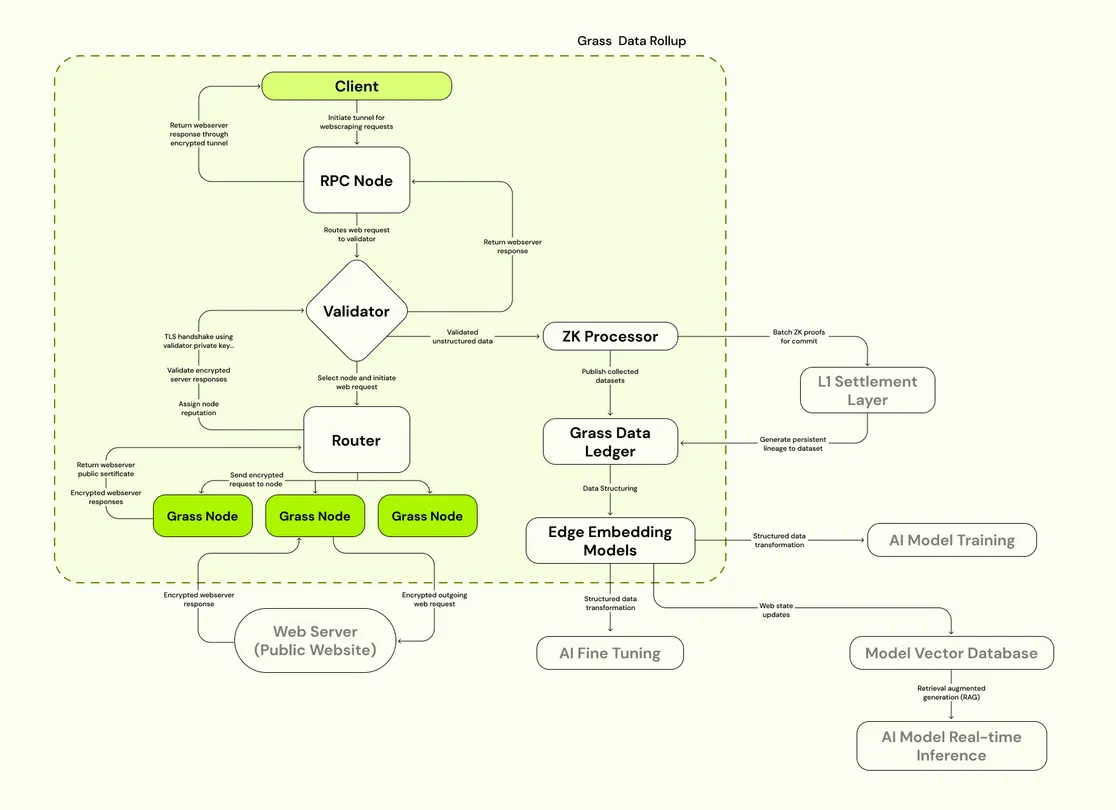
Rewards and Tokenomics System
Rewards are distributed through a points-based system, not immediate cash. Think frequent flyer miles that convert to actual tokens during periodic airdrops. Your location matters, how you use bandwidth counts, and referring active users earns you 20% of their contributions. Hit 100 hours of uptime? Bonus points.
Those tokens aren't just digital collectibles, either. Holders can stake them to routers (like becoming a preferred contractor), earning rewards every second with a 7-day cooldown if they want to unstake. The network is gradually transitioning from centralized control to community governance—a process that will determine GRASS's long-term credibility.
What Makes GRASS Different
Most people don't realize they're already sharing bandwidth. Buried in the terms of service for countless apps and smart devices are clauses allowing companies to use your internet connection for their own purposes. The difference? You never see a penny.
GRASS changes this dynamic fundamentally. Instead of hidden exploitation, everything happens transparently with your explicit consent and direct compensation.
Privacy Without Compromise
Here's what GRASS doesn't do: access your browser history, read your messages, or peek at your personal files. The system only handles encrypted traffic to public websites—the same stuff you could access yourself by typing a URL into your browser.
Zero-knowledge proofs provide mathematical certainty that data sources remain authentic. This isn't just marketing speak; it's cryptographic verification that helps address one of AI's biggest problems: data poisoning. When training datasets come from unknown or compromised sources, AI models inherit those flaws. GRASS's transparent provenance and verification systems work to mitigate this at the infrastructure level.
The platform's Data Ledger functions like a public audit trail. Every piece of information can be traced back to its origin, creating accountability that traditional web scrapers simply can't match. For enterprises buying datasets, this transparency represents a massive competitive advantage.
Accessible Economics for Everyone
Unlike most cryptocurrency projects that require technical expertise or significant capital, GRASS is accessible to anyone with an internet connection. No mining rigs, no complex DeFi strategies, no PhD in computer science required.
The underlying Solana blockchain handles the heavy lifting—processing transactions quickly and cheaply, while GRASS's Layer 2 solution manages the data processing. Users experience none of this complexity. They just install an app and start earning.
What really sets GRASS apart is how it aligns incentives. Traditional venture capital structures concentrate ownership among early investors. GRASS allocates 30% of tokens directly to community members, creating genuine user ownership of the infrastructure they help build. When the network succeeds, participants succeed proportionally.
Recent Growth and Development
GRASS has achieved significant growth since launch, expanding from an initial concept to a network serving over 3 million users. The platform has maintained steady development momentum throughout 2025 with several major updates.
The numbers tell part of the story. October's airdrop distributed 100 million tokens to over 2 million users, creating one of the largest token distributions in crypto history. This initial distribution laid the groundwork for continued expansion.
Platform Updates and New Features
This year brought game-changing updates that expanded both accessibility and earning potential:
- Mobile Revolution (June 2025): The new mobile app doesn't just match desktop functionality—it triples point accumulation when running alongside other devices. Suddenly, users could monetize their bandwidth 24/7 across multiple touchpoints
- Hardware Evolution (July 2025): Enter Grasshopper, a dedicated plug-and-play device that requires nothing but an ethernet connection. No heat, no noise, just consistent uptime that software solutions can't match.
- Airdrop Success Story: That initial 100 million token distribution proved GRASS could execute at scale, reaching users across 190 countries simultaneously, though regulatory restrictions limit participation in certain jurisdictions.
- Institutional Validation: Multiple funding rounds totaling at least $4.5 million, including a $3.5 million seed round led by Polychain Capital and Tribe Capital, plus an undisclosed Series A led by Hack VC.
The Grasshopper Hardware Strategy
The Grasshopper device represents more than just hardware—it's GRASS positioning for the future. While current software nodes handle basic data collection, dedicated hardware opens possibilities for advanced features like real-time data sorting and lightweight AI processing directly at the edge.
Tokenomics & Market Position
GRASS tokenomics tell a story about priorities. With 1 billion tokens total, how they're distributed reveals what the team values most.
Token Distribution Strategy
The allocation speaks volumes about GRASS's community-first approach:
- Community (30%): The largest single allocation goes directly to users through airdrops, router rewards, and ongoing incentives
- Foundation & Ecosystem Growth (22.8%): Reserved for network upgrades and strategic partnerships that benefit everyone
- Early Investors (25.2%): Subject to a 1-year cliff and 1-year vesting period, preventing immediate selling pressure
- Contributors (22%): Core team allocation with 3-year vesting, ensuring long-term commitment over quick profits
Compare this to typical crypto projects where insiders control 60-80% of tokens. GRASS deliberately inverts that model, putting ownership in users' hands rather than concentrating it among venture capitalists.
Current Market Performance
The market has responded positively. As of July 10, 2025, $GRASS trades at $1.14 USD with a robust daily volume of $47.52 million. At a $280.31 million market cap, it ranks #157 among all cryptocurrencies—impressive for a project that only launched eight months ago.
What's more telling than price, however, is sustained trading activity. High volume suggests a combination of utility-driven interest and speculative trading. Users earn tokens through participation, stake them for rewards, and possibly use them for network governance. This creates natural buying and selling pressure based on actual platform usage, though market dynamics inevitably include speculative elements.
The tokenomics model reflects something deeper: GRASS's commitment to building sustainable infrastructure rather than extracting quick value. Long vesting periods, community allocations, and utility-driven design all indicate that the project is planned for years, not months.
Advantages and Competitive Position
GRASS succeeds where many others have failed, by solving real problems for real people. Instead of creating artificial scarcity or speculative value, it monetizes something genuinely wasteful: unused internet capacity.
Every household and business pays for bandwidth they don't fully utilize. GRASS turns that economic inefficiency into an opportunity. Unlike mining operations that consume additional electricity or DeFi protocols that require active management, this generates passive income from resources already purchased and sitting idle.
The privacy approach creates competitive moats that competitors struggle to replicate. While traditional web scrapers operate in legal gray areas and face constant blocking attempts, GRASS's residential IP network appears completely natural, allowing it to target websites with ease. Companies get better data quality while users maintain complete privacy—a rare win-win in today's surveillance economy.
Technical infrastructure provides sustainable advantages too. The platform's zero-knowledge proofs not only protect privacy but also solve AI's data poisoning problem. When enterprises purchase training datasets, they require assurance that the information hasn't been manipulated or corrupted. GRASS provides cryptographic certainty about data provenance, which traditional scrapers simply cannot match.
Perhaps most importantly, the network effects continue to strengthen. More users mean better geographic coverage, which attracts more enterprise customers, which in turn increases token value, drawing even more users. This virtuous cycle becomes self-reinforcing as the network matures.
The transition toward decentralized governance represents the final piece of the puzzle. As validator committees replace centralized control, GRASS evolves from a company product into genuine user-owned infrastructure. That transition addresses the biggest criticism facing most crypto projects: centralization disguised as decentralization.
Challenges and Market Risks
No project scales without obstacles, and GRASS faces several that could derail its trajectory if not handled carefully.
Regulatory complexity tops the list of concerns. The platform must navigate various internet laws across 190 countries while ensuring users remain eligible for rewards. Currently, anyone in sanctioned jurisdictions or high-risk regulatory areas is excluded from token distributions—a necessary but limiting approach that significantly shrinks the potential user base.
More troubling for crypto purists, the GRASS team still controls the network for now. While decentralization plans exist, the current validator set represents a single point of failure that undermines the project's philosophical foundations. Users must trust that transition plans will actually materialize rather than remaining convenient promises.
Competition pressure intensifies as success attracts imitators. Established web scrapers aren't standing still, and other DePIN projects are targeting similar use cases with different approaches. GRASS needs continuous innovation to maintain its advantages, requiring sustained development funding and team execution over the years.
The success of Grasshopper depends on external factors, including manufacturing costs, supply chain reliability, user adoption rates, and pricing strategies, which remain unclear. Hardware businesses operate differently from software platforms, requiring different expertise and capital allocation.
These challenges aren't fatal, but they require honest acknowledgment. GRASS's ultimate success depends on executing technical roadmaps while navigating regulatory landscapes and competitive pressures that could change rapidly.
Future Outlook and Market Potential
The convergence of AI growth and data scarcity creates a perfect storm of opportunity for GRASS. As machine learning models become more sophisticated, they demand increasingly diverse and high-quality training data. Traditional sources—such as web scraping, synthetic generation, and proprietary datasets—all have significant limitations that GRASS's approach directly addresses.
Market Positioning in AI Growth
Market projections support this thesis. The global big data market is expected to triple by 2027, driven primarily by AI applications that require real-world, unbiased information. GRASS positions itself at the center of this growth, providing exactly what AI companies need: transparent, traceable, geographically diverse datasets.
The network's evolution toward becoming what they call a "user-owned knowledge graph of the internet" represents an ambitious attempt at something unprecedented. Currently, only Google and Microsoft possess the infrastructure to crawl the entire web at scale—capabilities that underpin their trillion-dollar businesses. GRASS aims to democratize this power, distributing both the work and the rewards among millions of participants.
Hardware and Infrastructure Evolution
Hardware initiatives like Grasshopper could significantly accelerate this vision. Dedicated devices offer more consistent uptime and processing power than software solutions, enabling advanced features such as real-time data analysis and edge computing. If adoption succeeds, GRASS evolves from a simple bandwidth-sharing network into a distributed computing infrastructure.
The platform's commitment to expanding accessibility through mobile apps and simplified onboarding suggests awareness that success depends on mainstream adoption, not just crypto enthusiasts. Reaching beyond typical DeFi users toward ordinary internet users could unlock exponentially larger network effects.
However, execution remains everything. Achieving full decentralization, navigating regulatory landscapes, and scaling hardware production all present significant challenges. Success requires sustained innovation and careful management of competing priorities over multiple years.
Conclusion
GRASS is something rare in crypto: a project that solves real problems for real people while building genuinely useful infrastructure. By turning unused internet bandwidth into income streams, it addresses economic inefficiency that affects everyone with an internet connection.
The platform's rapid growth—from launch to 3 million users in eight months—demonstrates that market demand extends far beyond speculative trading. Users participate because GRASS provides tangible value, not because they're chasing quick profits.
Technical capabilities support the ambitious vision. The Layer 2 Solana implementation handles enterprise-grade data processing while maintaining the speed and cost efficiency that users expect.
Challenges remain significant—regulatory hurdles, concerns about centralization, and competitive pressures could all impact long-term success. But GRASS's transparent approach to these obstacles, combined with steady technical progress and expanding accessibility, suggests a project built for sustainability rather than speculation.
For users considering participation, entry barriers are remarkably low. The browser extension, mobile app, or Grasshopper hardware all provide straightforward ways to start earning from resources that would otherwise sit unused. To learn more or get started, visit grass.io or follow @grass on X for project updates.
Sources
Read Next...
Frequently Asked Questions
How much money can you actually make with GRASS?
Earnings depend on your bandwidth usage, location, and device uptime. Users earn Grass Points based on contribution levels, with bonuses for referrals (20% of referred users' contributions) and achieving 100+ hours of uptime. The mobile app triples point accumulation when running alongside other devices. Exact dollar amounts vary based on token price and individual usage patterns, but consistent participants report meaningful passive income from resources they were already paying for.
Is GRASS safe and does it access my personal data?
GRASS only handles encrypted traffic to public websites—the same content you could access by typing URLs into your browser. The platform doesn't access browser history, read messages, or peek at personal files. Zero-knowledge proofs provide cryptographic verification of data authenticity while maintaining complete privacy. The system uses your unused bandwidth transparently with explicit consent, unlike many apps that secretly share bandwidth through buried terms of service clauses.
What makes GRASS different from other bandwidth-sharing programs?
Unlike traditional programs that provide no compensation, GRASS offers direct cryptocurrency rewards for bandwidth sharing. The platform uses sophisticated Layer 2 Solana infrastructure with zero-knowledge proofs to ensure data authenticity—solving AI's data poisoning problem while maintaining user privacy. Additionally, GRASS allocates 30% of tokens directly to community members rather than concentrating ownership among investors, creating genuine user ownership of the infrastructure they help build.
Disclaimer
Disclaimer: The views expressed in this article do not necessarily represent the views of BSCN. The information provided in this article is for educational and entertainment purposes only and should not be construed as investment advice, or advice of any kind. BSCN assumes no responsibility for any investment decisions made based on the information provided in this article. If you believe that the article should be amended, please reach out to the BSCN team by emailing [email protected].
Author
 Crypto Rich
Crypto RichRich has been researching cryptocurrency and blockchain technology for eight years and has served as a senior analyst at BSCN since its founding in 2020. He focuses on fundamental analysis of early-stage crypto projects and tokens and has published in-depth research reports on over 200 emerging protocols. Rich also writes about broader technology and scientific trends and maintains active involvement in the crypto community through X/Twitter Spaces, and leading industry events.
(Advertisement)
Latest News
(Advertisement)
Crypto Project & Token Reviews
Project & Token Reviews
Comprehensive reviews of crypto's most interesting projects and assets
Learn about the hottest projects & tokens



